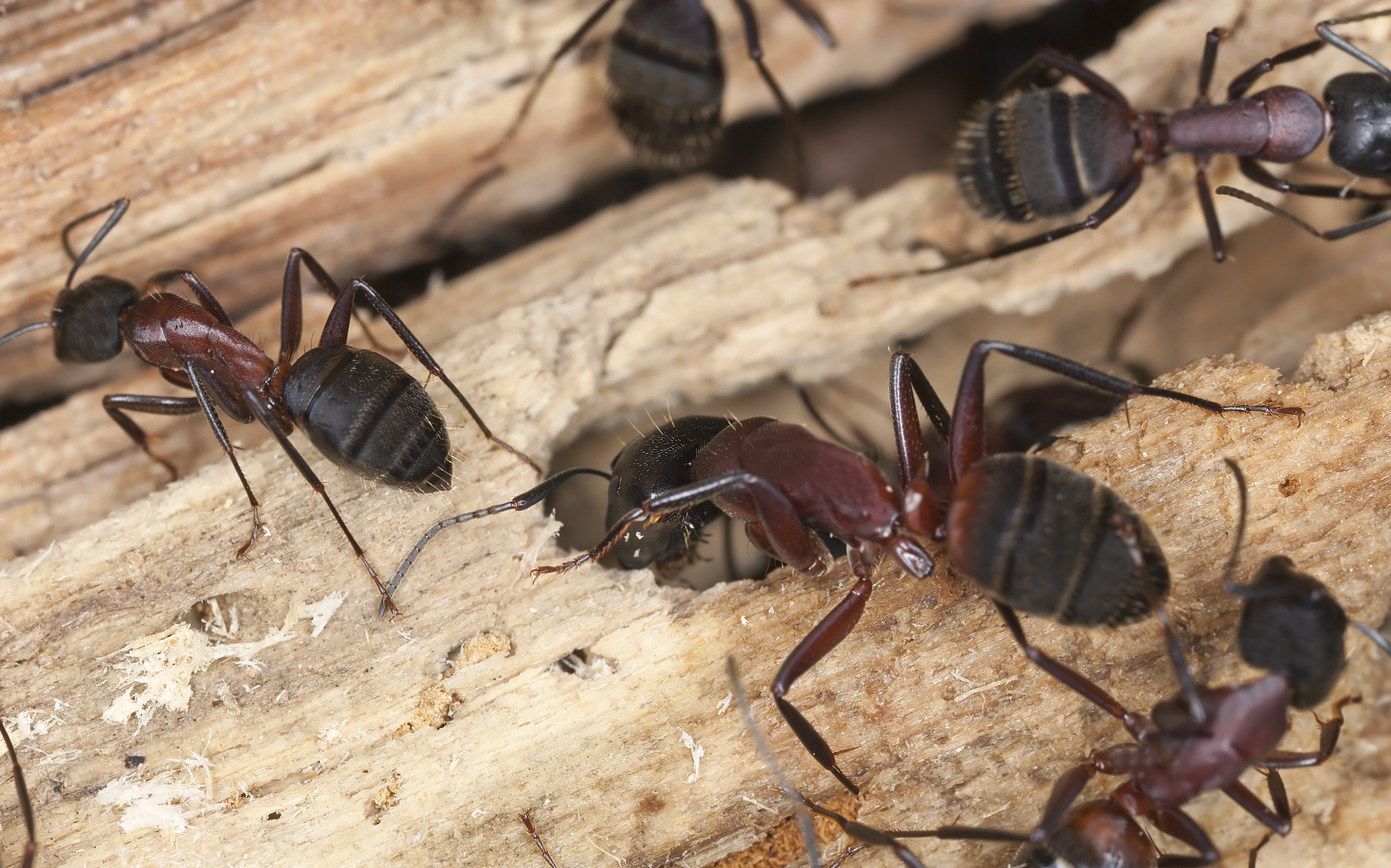Carpenter Ants: Spot and Stop Them in Your Home

If you’ve spotted large black ants roaming around your kitchen or bathroom, it’s time to pay attention. While they might look like just another bug, these pests could be carpenter ants—one of the most common and destructive wood-damaging insects found in homes across the Mid-Atlantic.
So how do you know if these ants have set up shop inside your walls? And more importantly, what should you do about it? Here's what every homeowner needs to know about how to get rid of carpenter ants.
5 Signs You Have An Infestation and Need Carpenter Ant Control
- The Ants Themselves
The most obvious sign is seeing carpenter ants inside your home. These ants are typically large (up to ½ inch) and either all black or black with red coloring. They’re especially active in the late afternoon and early evening, particularly during warm summer days. If the weather turns cold or rainy, they may become even more active indoors. - Piles of Frass (Sawdust-Like Debris)
Carpenter ants don’t eat wood like termites do. Instead, they chew through it to create nesting galleries, leaving behind small piles of wood shavings and insect parts near the nest entrance. This debris, called frass, is often found in attics, basements, or behind baseboards and window frames. - Winged Swarmers
During the summer, carpenter ant colonies may produce winged swarmers—ants that leave the nest in large groups to mate and establish new colonies. These swarmers are frequently mistaken for termites. If you spot winged ants inside your home, it’s a strong sign of an active indoor nest. - Rustling Noises in Walls
In quiet areas of the home, like a bedroom or attic, you might hear faint rustling or tapping noises coming from inside the walls. That could be ants moving through their tunnels or expanding the nest. - Moisture-Damaged Wood
Carpenter ants are drawn to areas with excess moisture or previous water damage. If you’ve had leaks near rooflines, windowsills, chimneys, or plumbing, these areas can become prime nesting sites for a growing colony.
Why Are Carpenter Ants a Problem?
While they may not eat wood like termites, carpenter ants still cause serious structural damage by hollowing out wooden beams, insulation, and even foam. Their colonies can grow quite large, often branching into multiple satellite nests that quietly cause damage in different parts of the house.
Common nesting areas include:
- Inside: Rooflines, kitchens, bathrooms, window and door frames, and chimneys.
- Outside: Decks, porches, fences, firewood piles, and even trees.
The longer they’re allowed to expand, the more extensive—and expensive—the damage can become.
DIY Treatments: Do They Work?
If you're researching how to get rid of carpenter ants, you've probably looked into do-it-yourself methods for carpenter ant extermination. While it’s tempting to grab an over-the-counter spray and try to tackle the problem yourself, most DIY treatments don’t work on carpenter ants. Here’s why:
- Store-bought sprays are repellents, meaning they only kill on contact and cause ants to retreat deeper into walls—making them harder to reach.
- Baits from the store are usually designed for smaller ant species, using sweet attractants that carpenter ants often ignore.
- Carpenter ants nest in inaccessible areas, like wall voids, making it nearly impossible to reach them without professional tools and knowledge.
In short, DIY solutions often prolong the problem and can end up costing more in the long run.
When to Call Viking Pest Control
If you suspect carpenter ants—or any wood-destroying insect—have invaded your home, the safest, fastest, and most effective option is to call a carpenter ant control company like Viking Pest Control.
At Viking, our licensed technicians:
- Know how to identify and locate primary and satellite nests
- Use targeted treatments that reach deep into walls and structural voids
- Help prevent future infestations by identifying moisture issues and sealing entry points
Don’t wait until you see damage—act early.
Carpenter ants may be silent, but they’re could be eating away at your home’s structure. If you're in New Jersey, Pennsylvania, Delaware, or the Eastern Shore of Maryland, and think you might have a problem, reach out to Viking Pest Control today for carpenter ant extermination and prevention.











